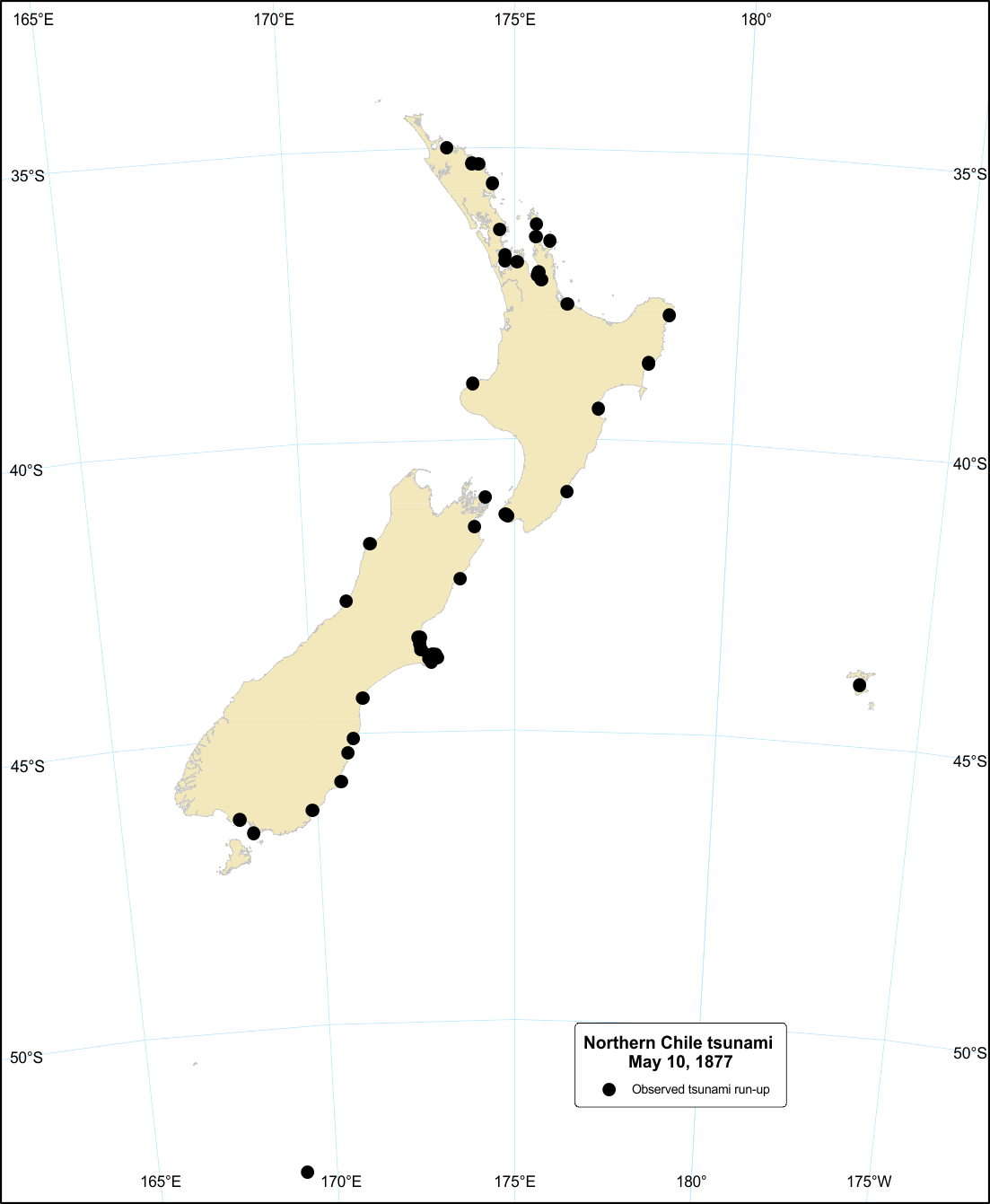Northern Chile tsunami, 11 May 1877
This tsunami was less pronounced than the 1868 tsunami from Chile, probably because the tides were below Mean Sea Level.
- Date: 11 May 1877
- Source: Distant
- Cause: Earthquake in northern Chile
The tsunami caused by an M 8.3 earthquake in northern Chile, first arrived on the main islands of New Zealand early on the morning of 11 May 1877. Generally the tsunami was less pronounced than the 1868 tsunami and it did not cause as much concern or damage, probably because some of the largest waves about Banks Peninsula and Oamaru, and along much of the South Island and southern North Island east coast occurred when the tides were below Mean Sea Level. On the other hand, the Coromandel and Northland were impacted close to high tide.
The first waves of the tsunami generally arrived not long after the forecasted arrival time and were greatest within the first 6-12 hours. The tsunami was first observed at Westport about 10 hours after the first arrivals on the east coast.
The tsunami was observed at 50 locations, from Mangonui (in Northland) to Riverton (in Southland), and at Westport on the West Coast. In Waitangi (~3-3.5m water height above sea level) in the Chatham Islands, a house and bridge were washed away
The most affected areas in the North and South Islands were Northland, Coromandel, Banks Peninsula, and Oamaru, with water heights above sea level at the time reaching just over 3m at Little Akaloa, possibly Pigeon Bay, and Akaroa. Heights of 1-1.5m were common, with 8 locations only experiencing heights of 2m or more.
